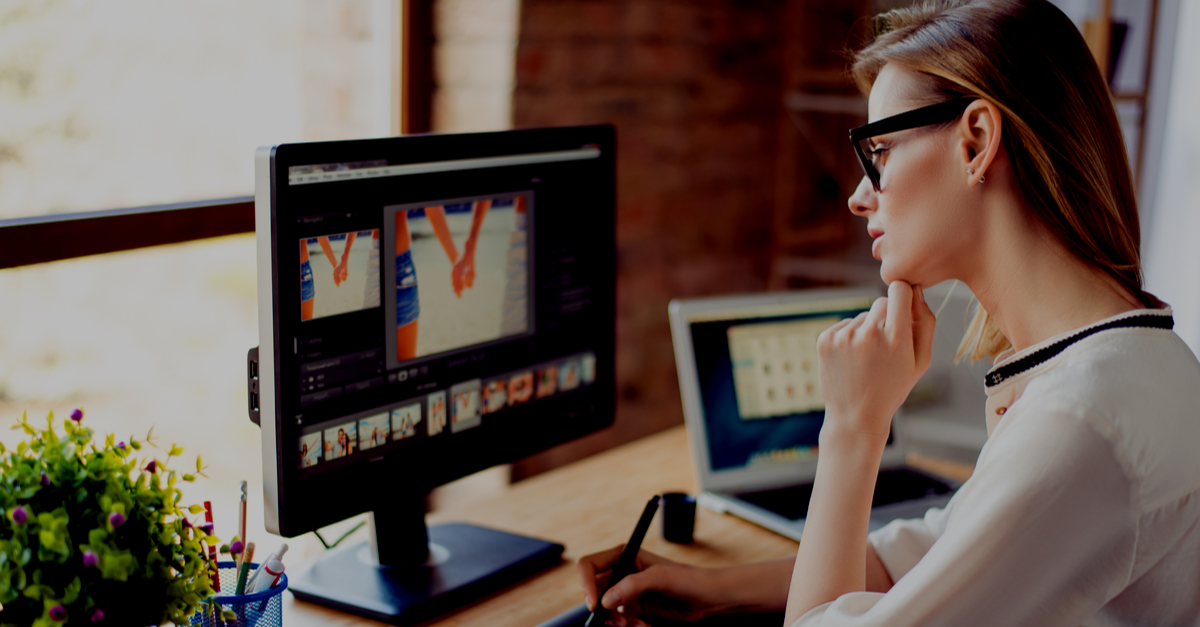Did you think animations were only meant for cartoons? Think again!
Trendy and fun websites with full-screen moving images and small hover effects are using animation to create these attractive features as well. All to keep the user engaged longer and more meaningfully with the content.
What’s more, it’s becoming easier and easier to include touches of animation and illustration in the design when you create your own website. Simple tools that are user-friendly, as well as high-speed internet connections, are allowing easier creation of little movements, changing color icons, GIFs, videos or more.
Animations have become practical and useful web design tools so it is time you understood how to add this to your online store design as well.
Why Use Animations in web design?
Well, for starters they are eye-catching when used in the right way.
And, in addition – Animations can give clarity to complex ideas by simplifying the message and keep users engaged with your site for longer
They have a strong visual identity which is valuable for your site or brand.
Potentially animations can encourage an emotional connect with your user especially when they are aesthetically appealing and bring realism to your site.
Bringing things to life
Have you noticed how some websites have buttons that change color when you hover on them? And perhaps you’ve seen slide transitions of images on some website home pages. Or even the addition of a video on their landing page. Perhaps you are considering adding some movement or interest when you create your online store as well.
All of these are examples of animation in web design; that is when something created in two-dimensional form is “brought to life” and appears to move. For example, a bouncing app icon while you are waiting for it to load.
Keep It Subtle and Classy
The idea is to integrate animation and illustration on your website into a realistic experience. Let’s illustrate what this means. Imagine that you have an animated frog who hops on your website.
If the way this animated frog hops replicates real-life action, it will be attractive to visitors on your website. And as their eyes follow, the frog hops from one tile with text to the next, guiding the user accordingly.
The most successful examples of animation are those that provide cues to the user on where to go next. Another simple example of this could be a button that changes color when you hover on it, as subtle encouragement to click on it. These simple animations don’t change the aesthetic or the layout of the design.
Most importantly, they don’t slow down the website as it loads either on desktop, tablet, or mobile. They are not thrust upon the user, rather provided as an interesting choice or diversion that is relevant and part of a planned outcome.
Even if you choose to use large scale animation like slide transitions, keep in mind that the key ingredient to interesting animation is moderation and realism. Too many slides or too much animation can make the website very chaotic. So choose a theme and stay with it. Use the illustration or animation to instruct and create a happy medium between simplicity and usability.
How To Maximise Impact Of Animation On Your Site
Think of animation as a great trick to use. Just like you would need the skill to deliver a great trick, so also with animation, you must use it skillfully to get the most out of this simple design tool.
For that, let us understand the three main uses of any movement or animation in web design.
- Firstly, movement or animation on a website is very valuable for providing micro-interactions.
This refers to interactions like buttons, notifications, menus, changing colors, error messages and any such engagement that speaks to the user directly from that one action. - The second important use is on a larger scale and relates to guiding page behavior. This includes things like navigating pages (scrolling, slide transitions, etc)
- And the third use of animation is simply to delight as a decorative. This purely visual use provides an emotional connect with the user and results in potentially keeping the user engaged with your site for a longer period of time.
A handy tip for when you are creating animation for sparking visual interest is to have a goal in mind. Like for instance, creating visually engaging animation that is designed for sharing or creating an element of surprise on your site.
Keeping these three main uses in mind, consider adding animation or motion to your web design for maximum impact.
Typically the scenarios where this works well will be –
- When you communicate some function or ‘how to use’ a section or highlight that an element is clickable on your site. For example ‘Register’, ‘Download’, and more.
- When you want to highlight new updates or provide simple notifications and messages.
- For announcing something new like a feature or a page etc. This could be as a pop-up, a banner, or in more ways.
- For providing a pathway that directs the user to the next step in a process. For instance scrolling on a page or transitioning slides.
- To provide feedback about some command initiated, like a notification confirming successful submission of a form, etc.
- When you want to explain in a simple direct manner some function, of a section on your website.
- When you are looking to create a flow of navigation for users or direct them to some call-to-action such as a ‘Buy’ button.
What Types Of Animation Or Illustration To Use?
Unless you live in a bubble by yourself, you must be familiar with emojis and GIFs and you probably use them in your daily interactions as well. These are the simplest and most widely identifiable types of animation for a start.
They are popular because they make the message easy to grasp quickly, and important since they are lighter than heavy images.
They load much faster on mobile and therefore give a seamless experience to the user on mobile as well.
Video content as background or ‘play-in-play’ is also valuable for breaking the monotony and providing an alternative way to understand the message without reading through a lot of text.
Scrolling effects for pages – using the scroll down method versus clicking to reach the next page is another relevant time-saving feature that adds value and worth exploring.
It is clear that animated gifs, background videos, motion graphics, scrolling effects, and micro-interactions are all popular with web designers and site users for a variety of uses. As a rule of thumb though, make the animation or illustration you use on your website serve a purpose.
How to Integrate Motion Into Your Website Design
Platforms like Shopmatic – eCommerce store builder, provide the pre-existing facility to insert animation into your web design. Take a look at the features, and various themes to decide what you would like to activate for yourself if you are using this platform. To educate and equip yourself further, consider these simple tools to get yourself started.
Top 3 Tools to integrate animation into your web design –
Hippo Animator
Hippo Animator is a powerful yet easy to learn editor. It’s simple to create a good looking animation with its help quickly. Recommended for beginners and experts. The tool works both on phones and tablets. The movies automatically scale to fit any web browser size.
Radi
Radi is a tool for creating video, animation and real-time graphics for the current web. It allows you to draw vector shapes and give them life with motion animation and shape poses, add images, patterns and text, publish as HTML that’s compatible with smartphones, iPads & e‑books.
Animatron
No sign up required to get started. Animatron is a simple and powerful online tool that allows you to create stunning HTML5 animations and interactive content. It lets you import artworks, SVG or images, drag objects from library, create custom shapes with Pathfinder, split project into multiple scenes, draw with drawing tools, import sound, adjust animation with timeline, send URL to friends to collaborate, add interactivity, publish as HTML5, GIF or video, embed animation to your website.
Final Words
Don’t underestimate the power of delight. A user who is able to easily understand what you are saying and having fun on your site will be happy, and therefore more engaged. So integrating the right kinds of animation can make a world of difference to your pages.
Keep your goal fixed on enhancing the impact of the content and increasing usability. Make the user’s experience better!
You might also like to read these for further resources –
Inspire yourself entrepreneurially



really you have just take a very great point in consideration…. well explained.
https://www.fiverr.com/aminslalani/create-an-animated-video-ads
I appreciate this is a very useful blog thanks for delivering your great ideas about Use Animation And Illustration In Web Design.
https://www.fiverr.com/aminslalani/create-an-animated-video-ads